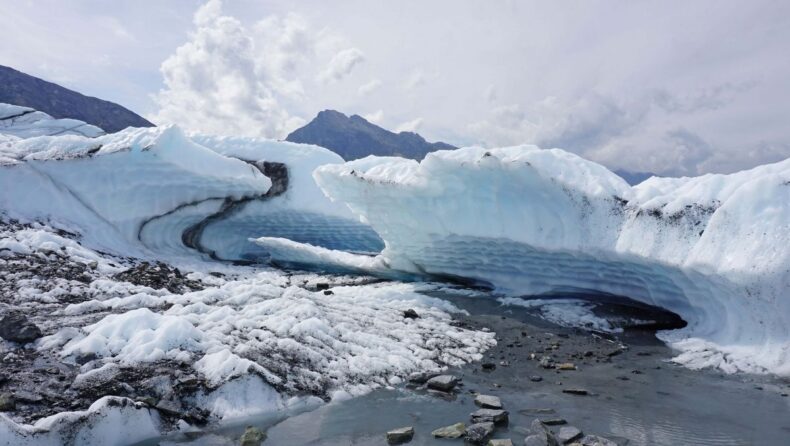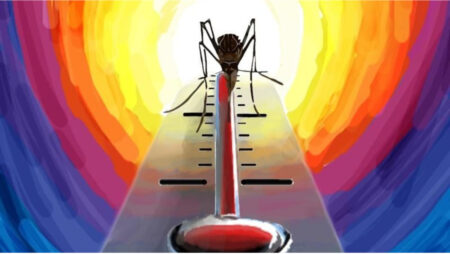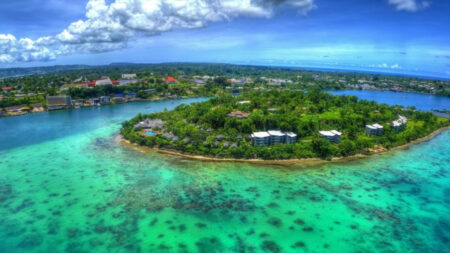Every few years, the IPCC issues Assessment Reports, which are the most comprehensive and widely acknowledged scientific assessments of the state of the Earth’s climate. In its latest report, released on Monday, the Intergovernmental Panel on Climate Change (IPCC) issued a dismal assessment and warning, revealing what UN Secretary-General Antonio Guterres called “a litany of failed climate commitments” by governments and corporations.
“It is a file of shame,” Guterres added, “cataloguing the hollow pledges that have put us firmly on the path to an unlivable planet.”
The panel on climate change
The IPCC is the United Nations agency in charge of analysing climate change science. The World Meteorological Organization (WMO) and the United Nations Environment Programme (UNEP) established the IPCC in 1988.
Its principal task is to write assessment studies, special reports, and methodology reports that assess the current status of climate change knowledge. The IPCC, on the other hand, does not conduct scientific research. Instead, it requests that scientists from all across the world review all relevant scientific research on climate change and form rational conclusions.
They serve as the scientific underpinning for international climate change negotiations and serve as the framework for government actions to combat climate change. So far, six assessment reports have been released, with the sixth assessment report (AR6) being released in three parts: the first in August 2021, the second in February 2022, and the third on Monday.
The first section of AR6 warned of more intense and frequent heat waves, increased occurrences of extreme rainfall, a dangerous rise in sea levels, prolonged droughts, and melting glaciers, as well as the fact that 1.5 degree Celsius warming was much closer than previously thought and also inevitable.
Even if a considerable effort was made to cut greenhouse gas emissions, the second half of the report cautioned that additional climate change-related disasters were inevitable in the next two decades.
Previous report’s conclusions
- The first Assessment Report (1990) said that human-caused emissions are significantly increasing greenhouse gas concentrations in the atmosphere. In the previous 100 years, global temperatures have risen by 0.3 to 0.6 degrees Celsius. In the business-as-usual scenario, temperatures will rise by 2 degrees Celsius by 2025 and by 4 degrees Celsius by 2100, relative to pre-industrial levels. Sea levels were expected to rise by 65 cm by 2100.
The UN Framework Convention on Climate Change (UNFCCC), also known as the Rio Summit, was negotiated based on this report in 1992.
- In light of new findings, the Second Assessment Report (1995) updated the expected rise in global temperatures to 3 degrees Celsius over pre-industrial levels by 2100 and the projected rise in sea level to 50 cm. According to the report, the rise in global temperatures of 0.3 to 0.6 degrees Celsius since the late 1800s was “unlikely to be wholly natural in origin.”
AR2 served as the scientific foundation for the Kyoto Protocol, which was signed in 1997.
- The third Assessment Report (2001) updated the expected rise in global temperatures by 2100 from 1990 to 1.4 to 5.8 degrees Celsius. According to the report, the expected rate of warming is unparalleled in the last 10,000 years. The analysis forecast greater rainfall on average, as well as a rise in sea levels of up to 80 cm by 2100 compared to 1990 levels.
According to the report, glaciers would retreat in the twenty-first century and extreme weather events would grow in frequency, intensity, and length. The study revealed fresh and stronger evidence that human activities were the primary cause of global warming.
- According to the fourth assessment report (2007), greenhouse gas emissions grew by 70% between 1970 and 2004, with CO2 concentrations in the atmosphere reaching their highest level in 650,000 years in 2005 (379 ppm). Global temperatures might rise by 4.5 degrees Celsius beyond pre-industrial levels by 2100, and sea levels could be 60 centimetres higher than 1990 levels in the worst-case scenario.
The IPCC report was awarded the Nobel Peace Prize in 2007. It was the scientific input for the 2009 climate summit in Copenhagen.
- According to the Fifth Assessment Report (2014), human activities are responsible for more than half of the temperature rise since 1950, and atmospheric concentrations of carbon dioxide, methane, and nitrous oxide are “unprecedented” in the last 800,000 years.
Global temperatures could rise by as much as 4.8 degrees Celsius by 2100 compared to pre-industrial times, with more frequent and longer heatwaves “almost certain.” According to AR5, a “significant fraction of species” were threatened with extinction, and food security would be jeopardized. AR5 served as the scientific foundation for the 2015 Paris Agreement negotiations.
Published by – Kiruthiga K
Edited by – Kritika Kashyap













